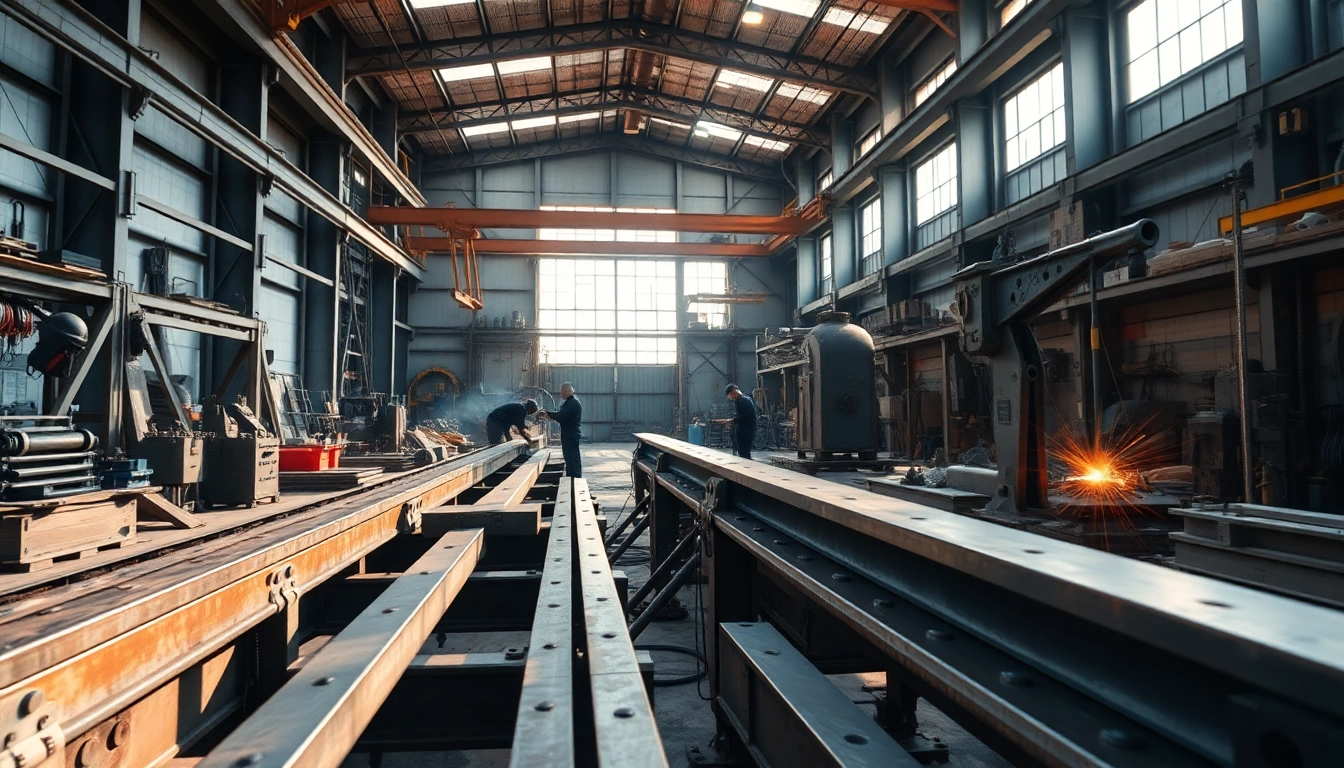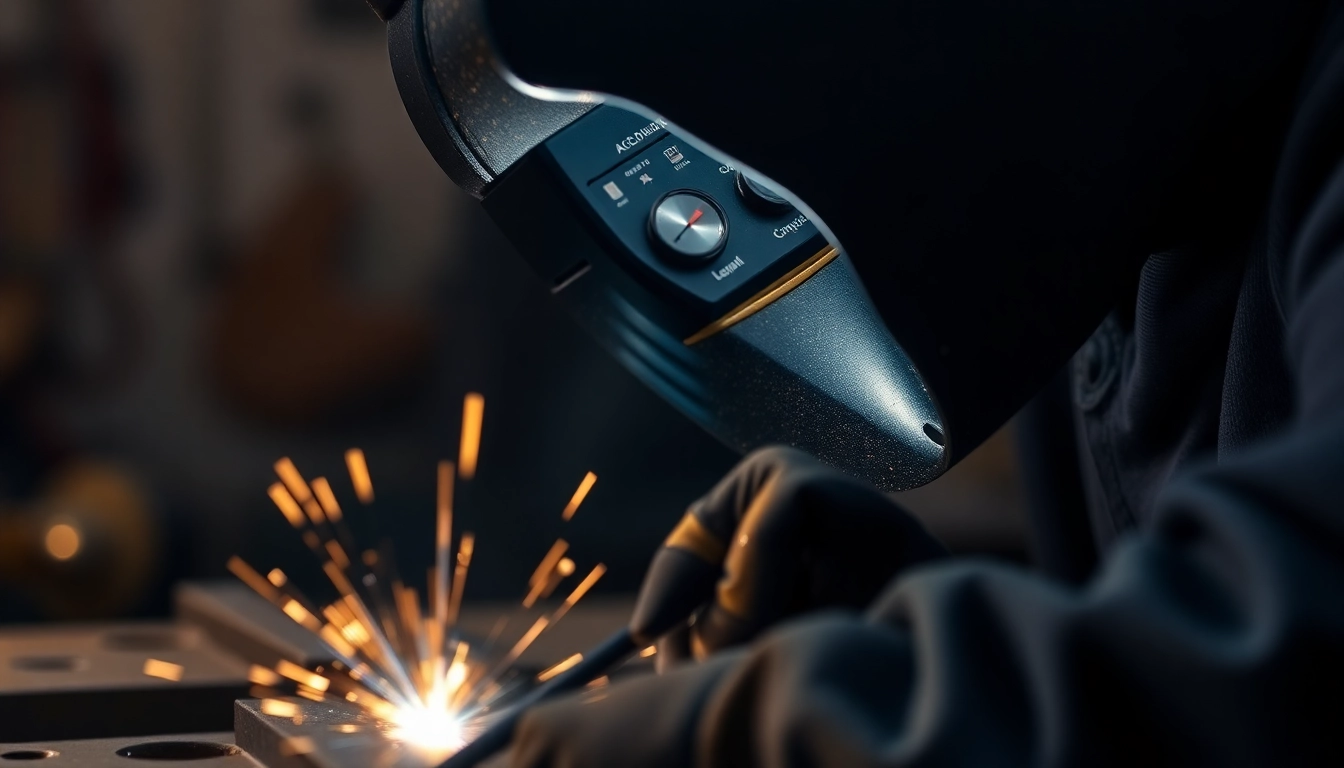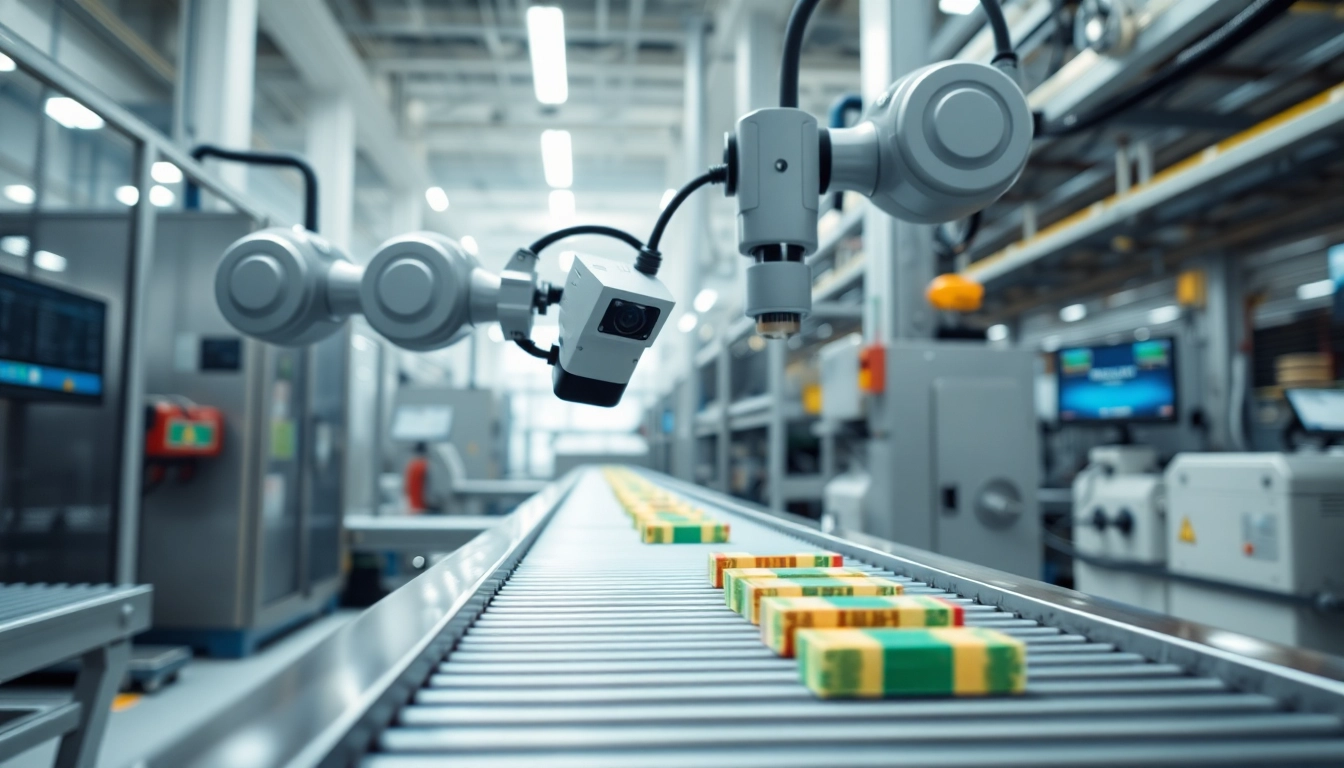The Essentials of a Steel Fabrication Shop
Overview of Steel Fabrication
Steel fabrication plays a crucial role in various industries, transforming raw steel into practical structures and components that are essential for modern construction and manufacturing. At its core, steel fabrication involves the processes of cutting, shaping, and assembling steel materials to create finished products ranging from beams and columns to intricate machinery parts. This capability not only enhances the functionality of manufactured goods but also contributes to the durability and effectiveness of countless applications, ensuring progress across sectors.
A steel fabrication shop serves as the heart of these activities, equipped with tools and machinery specifically designed for precision and efficiency in steelwork. Understanding the fundamental processes and equipment used in a steel fabrication shop can provide valuable insight into how these operations contribute to the economy and infrastructure at large.
Common Equipment Used in a Steel Fabrication Shop
Every steel fabrication shop invests in a variety of specialized equipment that enables them to perform complex tasks efficiently. Below are some of the most common equipment types:
- CNC Machines: Computer Numerical Control (CNC) machines provide precise cutting, drilling, and milling, allowing for intricate designs and repeatability with minimal error. These machines are vital for ensuring that steel components fit and function as intended.
- Plasma Cutters: Plasma cutting is an effective method for slicing through thick steel sheets quickly. Using high-temperature plasma, these tools can cut through metal with precision, which increases overall productivity in the shop.
- Welding Equipment: Various welding techniques such as MIG, TIG, and stick welding are essential for assembling steel components. Each method serves specific purposes and is selected based on the materials’ requirements and the project specifications.
- Shears and Punches: For cutting and shaping steel sheets, shears and punches are indispensable. They help in generating clean cuts without the need for extensive finishing work afterward.
- Forklifts and Cranes: Handling heavy steel materials safely requires robust lifting equipment. Forklifts and overhead cranes play a significant role in the movement of these materials within the shop, ensuring the workflow remains efficient and safe.
Safety Measures in Steel Fabrication
Safety is paramount in any steel fabrication shop due to the inherent dangers associated with heavy machinery and the materials themselves. Implementing robust safety measures is crucial to protecting workers and maintaining a productive environment. Key safety practices include:
- Personal Protective Equipment (PPE): Providing appropriate PPE, such as helmets, gloves, goggles, and steel-toed boots, protects workers from potential injuries related to cuts, falls, and exposure to harmful substances.
- Regular Safety Training: Conducting regular safety training sessions ensures that all employees are aware of the best practices and emergency protocols, thereby minimizing risks and accidents.
- Machine Safety Guards: Installing safety guards on machinery prevents workers from making accidental contact with moving parts, which can lead to severe injuries.
- First Aid Kits and Emergency Procedures: Equipping the workplace with well-stocked first aid kits and clearly mapped emergency procedures guarantees quick response times in the event of an accident.
- Routine Safety Audits: Performing regular inspections and safety audits minimizes hazards by identifying and rectifying potential issues before they escalate.
Materials and Techniques in a Steel Fabrication Shop
Types of Steel Used in Fabrication
Choosing the right type of steel is a critical step in the fabrication process. Various steel types offer different properties suited for specific applications. Common types used in fabrication include:
- Mild Steel: Known for its ductility, weldability, and affordability, mild steel is widely used in constructions where high strength is not a primary requirement.
- Carbon Steel: This type of steel has varying carbon content, influencing its strength and hardness. It’s popular for structural applications, delivering both strength and durability.
- Alloy Steel: Made with added elements (like nickel or chromium), alloy steel provides enhanced properties such as resistance to wear, corrosion, and heat, making it suitable for specialized applications.
- Stainless Steel: Renowned for its excellent corrosion resistance, stainless steel is often used in environments where hygiene and aesthetics are important, such as food and medical industries.
- Tool Steel: This high-strength material is heat-treated for durability and is commonly used for tools and dies that require high hardness and wear resistance.
Fabrication Techniques and Processes
Steel fabrication involves various techniques to transform raw materials into finished products. The most common processes include:
- Cutting: Techniques like sawing, water jet cutting, and laser cutting precisely shape steel according to specifications. As mentioned earlier, CNC technology plays a huge role in enhancing this process.
- Forming: This encompasses processes such as bending, rolling, and stamping that alter the shape of steel without compromising its structural integrity.
- Welding: By melting and fusing steel components together, welding not only joins materials but often creates a bond stronger than the base materials themselves.
- Finishing: Once the fabrication process is complete, finishing options such as painting, galvanizing, or powder coating add protection while also improving aesthetics.
Finishing Options for Steel Products
A crucial final step in the fabrication process is the finishing phase, which enhances both the durability and appearance of steel products. Some popular finishing options include:
- Galvanization: This process involves coating steel with a layer of zinc to prevent corrosion effectively, making it ideal for outdoor structures.
- Powder Coating: A dry coating process that provides a tough, protective finish available in various colors, powder coating enhances both aesthetics and resistance to weather elements.
- Painting: Applying protective paint can increase a product’s lifespan. It is particularly essential in environments subject to rust and corrosion.
- Polishing: For stainless steel products, polishing not only enhances their appearance but also increases corrosion resistance by removing surface imperfections.
Quality Assurance in Steel Fabrication Shop
Standards and Regulations to Follow
Quality assurance is vital in a steel fabrication shop to meet industry standards and ensure client satisfaction. Compliance with established standards such as ISO 9001 and American Institute of Steel Construction (AISC) guidelines is essential. These standards provide frameworks for maintaining quality throughout the manufacturing process. Regular audits and inspections help maintain compliance and identify areas for improvement.
Testing Methods for Steel Products
To guarantee the durability and reliability of finished products, various testing methods are applied, including:
- Destructive Testing: These tests help assess the material’s properties by applying stress until failure, which provides critical data about strength and ductility.
- Non-Destructive Testing (NDT): Techniques like ultrasonic testing, magnetic particle testing, and radiography allow for inspection without damaging the materials, ensuring structural integrity.
- Dimensional Inspection: Measuring the dimensions of finished products against specifications ensures that they meet tolerance levels and fit into assembly with other components seamlessly.
Maintaining Quality Control
Maintaining quality control involves a multi-step process that encompasses everything from supplier selection to final product inspection. Implementing a robust quality management system (QMS) can streamline these processes by:
- Standardizing Procedures: Creating detailed work instructions ensures that every team member knows the quality standards expected, which helps reduce errors.
- Continuous Improvement: Encouraging feedback and fostering a culture of continuous improvement allows teams to identify weaknesses and enhance practices over time.
- Employee Training: Regular training sessions ensure that workers are familiar with both quality standards and production techniques, leading to higher working standards overall.
Challenges Faced in a Steel Fabrication Shop
Addressing Material Shortages
Material shortages can pose a significant challenge to any steel fabrication shop. Fluctuations in supply chains may affect the availability and pricing of materials, ultimately impacting project timelines. To effectively address these shortages, shops can:
- Diversify Suppliers: Building relationships with multiple suppliers can help mitigate risks, as shops can switch sources in case of shortage.
- Forecast Demand: By accurately forecasting material needs based on project pipelines, shops can stock inventory ahead of time, cushioning impacts from sudden shortages.
- Optimize Material Usage: Implementing advanced inventory management systems can help track material usage patterns and optimize order levels, reducing waste.
Labor Challenges in the Fabrication Industry
The steel fabricating industry often faces labor shortages due to the skills gap and an aging workforce. This can result in difficulties in hiring qualified staff. To offset labor challenges, steel fabrication shops can adopt several strategies:
- Invest in Training Programs: Developing in-house training programs not only helps cultivate talent but also ensures that workers are equipped with the skills necessary for success in the shop.
- Engage with Local Educational Institutions: Forming partnerships with vocational schools and community colleges can create pathways for students to enter the fabrication industry directly.
- Offer Competitive Benefits: Providing attractive benefits and work conditions can help attract and retain skilled labor, ensuring operational efficiency and productivity.
Managing Project Deadlines Effectively
Project delays can arise from various factors, including material shortages, labor issues, and unforeseen technical challenges. To ensure timely delivery, shops can implement the following strategies:
- Streamline Processes: Conducting regular process evaluations allows shops to identify bottlenecks and optimize workflows, ultimately improving productivity.
- Utilize Project Management Software: Leveraging technology to manage projects helps track progress, allocate resources effectively, and maintain better communication among team members.
- Set Realistic Timelines: Establishing achievable project milestones ensures that teams remain motivated and that expectations are clearly communicated to clients.
The Future of Steel Fabrication Shops
Advancements in Technology for Fabrication
As technology evolves, steel fabrication shops are increasingly adopting innovative processes and tools that improve efficiency and precision. Advancements include:
- Robotics: The integration of robotic automation in fabrication processes can enhance speed and accuracy, with robots performing tasks such as welding, cutting, and assembling with minimal human intervention.
- 3D Printing: This technology is starting to be explored for creating complex steel components that traditional methods struggle to produce, which could revolutionize custom fabrication.
- Internet of Things (IoT): IoT connectivity is enabling real-time monitoring of equipment and processes, allowing shops to predict when machinery requires maintenance, proactively reducing downtime.
Sustainability Practices in Steel Production
In an increasingly environmentally conscious world, steel fabrication shops are adopting sustainable practices to minimize their ecological footprint. This may include:
- Recycling Scrap Steel: Utilizing scrap steel can significantly reduce waste and the need for raw materials, making production more eco-friendly.
- Energy Efficiency Upgrades: Investing in energy-efficient machinery and practices can minimize energy consumption, ultimately reducing operational costs and environmental impact.
- Adopting Green Certifications: Shops pursuing certifications like LEED (Leadership in Energy and Environmental Design) demonstrate commitment to sustainability, improving their brand image and appeal to eco-conscious clients.
Emerging Trends in Steel Fabrication
As the industry evolves, several trends are shaping the future of steel fabrication, including:
- Increased Customization: There is a growing demand for bespoke steel products tailored to specific needs, leading suppliers to adopt more flexible production methods.
- Collaborative Manufacturing: More shops are forming collaborative partnerships with other companies and industries to share resources, expertise, and technology, fostering innovation.
- Greater Focus on Safety: Innovations in smart safety equipment and practices are enhancing worker safety, positioning the industry to be more proactive in accident prevention.


